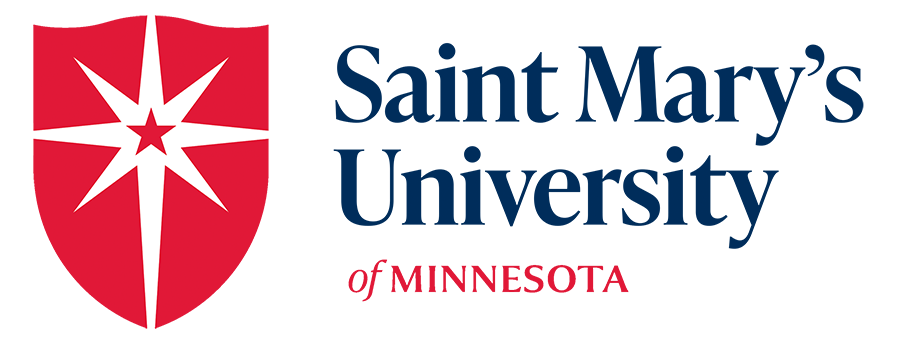News

What we’ve learned so far
“Map illustrations” by Jan Kallwejt is licensed under CC BY-NC-ND 4.0
Last week, CELT sent out a short survey to ask you what was working, what wasn’t working, and where you needed support in your newly online courses. You were all great about responding. Here is what we found:
What is working
There seem to be three main strategies you are taking to deliver your courses online: totally asynchronous activities online in Blackboard, mostly synchronous (Zoom or Google Meet) meetings with assignment submissions in Blackboard, or a “flipped” classroom style with mostly Blackboard based assignments and discussions with your regular class time devoted to drop-in Zoom meetings. For bigger classes or classes with complex projects, you’re finding that Zoom isn’t the easiest tool for managing big groups. But at least one of you has noticed that doing “jigsaw” type activities with bigger groups — where everyone contributes something different to an online discussion or assignment — is working well. Many of you are recording your Zoom meetings and/or lectures on Tegrity (small files, please!) so students can view them on their own time or if they are in a place where they don’t have internet access. (This really helps our students from China and those who can’t afford high speed internet connections.) This is one big advantage of using Google Meet to record your meetings. It can upload directly to Google Drive.
A lot of you are also reporting that students do enjoy Zoom so they can see their classmates again after a long while. And you’re also experimenting with Zoom’s breakout rooms feature to put students in small groups more intimate discussions. Other things that are working well are exchanging files via Google Drive, Blackboard announcements, direct emails, taking the time to explain the new technologies to your students, virtual office hours, exams and quizzes in Blackboard, and FlipGrid. At least one of you is also talking to students on that reliable piece of technology known as a phone call 🙂
What’s not working
There are a number of challenges we’re all still working through. Know that you are not alone if you are suffering from the workload of teaching and designing online components for four classes, slow internet speeds, spotty VPN connections, installing Tegrity at home, and students using Tegrity. IT has a number of good frequently asked questions here. Nobody wrote, “keeping the kids alive”, but that’s real work too. We have noted that it seems to be a trend to get away from massive Zoom meetings with 20+ students. That doesn’t seem to be workable in a meaningful educational sense for some of you, so pushing those discussions online to Blackboard might be a better option with large classes. There are some things we also expected, such as classes suffering which relied on unique software (Adobe products, primarily), group performances and concerts, and figuring out how to narrate powerpoint slides or use a doc camera over Zoom.
Also, you’re noticing some problems in getting students talking over Zoom and getting students to recognize you have the same standards as you did three weeks ago. We’re working on some resources for this.
What you need
A lot of you took this part of the survey to make some jokes. And to be fair, it probably wasn’t Bret’s best idea to put his dog on his personal payroll as a TA… But we know that, long term, you all need help with producing videos, better ways to do assessment than Blackboard, and attendance tracking. You’re also dealing with issues of peace and quiet, eye-strain, and reasonable expectations. Second monitors and faster internet connections are unfortunately not budget-realities right now. But this will all inform our efforts going forward.

CELT’s Contribution to Saint Mary’s response to COVID-19
We are not currently scheduling PubTalks or other faculty development events in lieu of contributing to the University’s response to COVID-19. For all of the resources for faculty we have developed so far, please see the Remote Teaching Guidelines by clicking on this link or visiting “Remote Teaching” from the top menu of this site. If you have any additional resources that you think would be helpful, direct them to apotthas@smumn.edu.
Good luck out there.

PubTalk: “Beyond the Lab Report” with Chris Jordan
Join us February 4th at noon in Cotter Café for the next Faculty PubTalk: Chris Jordan’s “Beyond the Lab Report”. How can we get better at teaching writing? Chemistry professor Chris Jordan has an answer: guiding students in writing mock grant proposals. In his Faculty PubTalk, Dr. Jordan will explore his motivation for this writing experiment, how it evolved, and how it’s impacted students.Add the event to your Google Calendar using this link: 
Faculty Pub is about supporting faculty who are working on writing projects and the PubTalk series embodies this with faculty who talk about their writing progress, process, and results. And the talks will generally be short with lots of opportunities for discussion. Refreshments will include doughnuts and coffee.
Feedback requested as LMS work continues
Author: Carissa Andrews
Your feedback is important as the LMS Task Force continues work on selecting a new learning management system for the university. As we wrap up demonstrations from our three vendor options, we’re working to compile your suggestions and make an informed decision. In an upcoming Cardinal Update, the LMS Task Force will share survey results from the demonstrations and outline next steps in the selection process.
Review demos
Thank you to all who have attended the demonstrations which are wrapping up today with Blackboard on the Twin Cities Campus. If you weren’t able to attend, you can review all demo recordings.
Complete survey
And whether you attended in person or via Zoom, or you’re watching the recording, please complete this quick survey and share your thoughts about D2L/Brightspace and Blackboard.
Questions?
If you have questions or would like access to the sandbox, email the LMS Task Force at LMS@smumn.edu to request access.
LMS Task Force Update: Vendor demonstrations to start on Jan. 15
Calling all learning management system users: We will have three vendors demonstrating — on our Winona and Twin Cities Campuses and through virtual broadcasts — their learning management systems during the next couple of weeks. We hope that faculty, staff, and students will attend and provide feedback during these demonstrations.
The three vendor finalists are Canvas, D2L, and Blackboard. Here is a breakdown of the upcoming demonstration schedules:
Vendor: Canvas Dates: Wednesday, Jan. 15 (Winona); Thursday, Jan. 16 (Twin Cities)
Schedule for Jan. 15 in Winona
Noon to 1:30 p.m.: Faculty and staff demo (Salvi)
2 to 4 p.m.: Hands-on demo (SM 125)
4 to 5 p.m.: Student demo (SLC 200)
Schedule for Jan. 16 in the Twin Cities
Noon to 1:30 p.m.: Faculty and staff demo (in BLH 105 Alumni Room)
1:30 to 2:30 p.m.: Student demo (in BLH 105 Alumni Room)
3 to 5 p.m.: Hands-on demo (CELT)
Vendor: D2L Dates: Tuesday, Jan. 21 (Winona); Wednesday, Jan. 22 (Twin Cities)
Schedule for Jan. 21 in Winona
Noon to 1 p.m.: Student demo (SLC 200)
2 to 4 p.m.: Hands-on demo (SM 125)
4 to 5:30 p.m.: Faculty and staff demo (SLC 200)
Schedule for Jan. 22 in the Twin Cities
Noon to 1:30 p.m.: Faculty and staff demo (in BLH 105 Alumni Room)
1:30 to 2:30 p.m.: Student demo (in BLH 105 Alumni Room)
3 to 5 p.m.: Hands-on demo (CELT)
Vendor: Blackboard Dates: Friday, Jan. 24 (Twin Cities); Tuesday, Jan. 28 (Winona)
Schedule for Jan. 24 in the Twin Cities
Noon to 1 p.m.: Faculty and staff demo (in BLH 27AB)
1:30 to 2:30 p.m.: Student demo (in BLH 27AB)
3 to 5 p.m.: Hands-on demo (CELT)
Schedule for Jan. 28 in Winona
Noon to 1 p.m.: Student demo (SLC 200)
2 to 4 p.m.: Hands-on demo (SM125)
4 to 5:30 p.m.: Faculty and staff demo (SLC 200)
All demo presentations (excluding hands-on time) will be available virtually for our online faculty, staff, students, and users located at other campuses.
Please click the link below to join the webinar at the above scheduled times:
https://smumn.zoom.us/j/
For additional questions, please send an email to LMS@smumn.edu. We value your input and look forward to your attendance at these demos.
Saint Mary’s University One LMS Project
One LMS Initiative Update: Survey results are in! Click here to see the results!
As announced earlier this fall by Provost Brian Schmisek, Saint Mary’s University of Minnesota is in the process of evaluating and recommending a single Learning Management System (LMS) to help create a consistent and modern teaching and learning experience for all our students — as directly a part of the university’s new strategic plan.
As part of the process, we are looking at both of our current systems (Blackboard and Engage) along with exploring other available options.
Most recently, the LMS task force surveyed all university faculty, staff, and students to determine usage, likes/dislikes, comments, and recommendations for consideration in moving forward with having a single system selected by the early part of 2020 — with the implementation and migration plan to be dictated by the vendor selected.
The results are in, and the taskforce is actively coding and interpreting the data — including manually coding in open-ended responses to supplement multiple-choice data — thanks to collective efforts, led by Alexandra Cheatham, academic assessment and evaluation analyst on the Twin Cities Campus.
The task force thanks all members of the university community who participated in completing the survey. In total, the task force heard from 153 faculty members, 85 staff/administration, 375 students, and 11 others. This represented 184 individuals at the Winona Campus, 293 people at SGPP campuses in the Twin Cities and Rochester, and another 146 responders who are a part of the online learning community in various capacities.
So far, we are learning that the majority of users feel proficient in accessing information and completing tasks in their LMS (either Blackboard or Engage). Ninety percent of the faculty are using the LMS in their blended, on-campus, and online courses throughout each week or every day. Most respondents — both faculty and students — thought it was important to be able to access the LMS on their mobile devices. Additionally, a large majority of students are either moderately or extensively accessing the LMS for their course information.
Going forward, the next phase of the process involves completing the list of requirements and finalizing the RFP (Request for Proposal) message that will be sent to several vendors. Based on the responses, top selections will be invited in for demonstrations with the task force to help further widdle down our top contenders in January.

Self-Paced Blackboard Training
Are you interested in learning Blackboard, but don’t have time to attend a workshop? Then consider “Blackboard Essentials,” a self-paced tutorial that teaches you the top 10 Blackboard skills: 1) posting documents 2) using the assignment tool 3) create a discussion forum 4) modify the menu 5) use the content editor 6) make your course available 7) create an announcement 8) access student roster and send emails 9) manage/grade discussions, and 10) work with rubrics.
